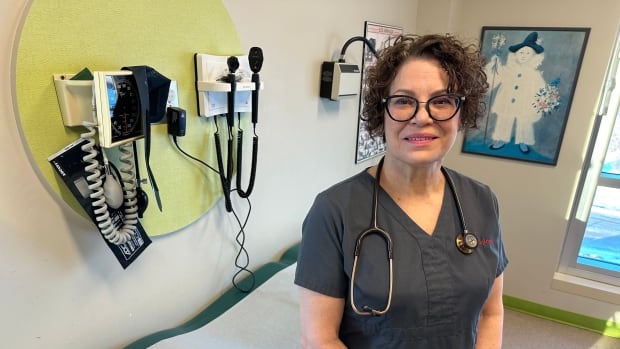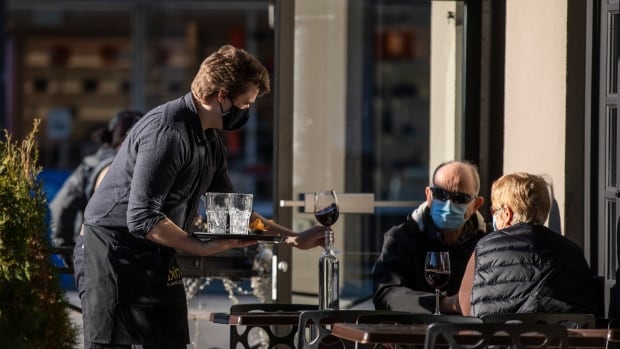The call Chris Cameron received from the hospital on Jan. 16 said that her husband, Frank, had fallen. He had only a minor cut on his head, but he was crying and asking for her, she was told.
She arrived at the Victoria General Hospital a short time later to find him in a wheelchair, waiting for her at the nurses’ station. She soon realized something much more serious could be wrong with her husband.
Based on how painful it was for him to be moved into the bed, and the position of one of his legs once he was lying down, a family friend and retired nurse who went to the hospital with Chris that day suspected a broken hip. An X-ray confirmed that suspicion, and Chris was informed the next day.
“That was my biggest fear,” she said during a recent interview. “It had come true. And I knew this was the end for him.”

Frank Cameron, a well-known radio and TV broadcaster for decades, died in hospital on Jan. 20, four days after breaking his hip. He was 85.
It was the painful conclusion of multiple frustrations and disappointments with the health-care system as Chris tried to advocate for her husband and get him the right care in the right place.
More than five months later, she still has questions.
Tributes would pour in for Cameron, who spent much of his career in various roles with the CBC. In retirement, he combined his love of radio and music as a host at the community radio station Seaside FM from 2005 until July 28, 2023.
But until now little was publicly known about the circumstances around his death, or the fact that he spent all but two days of his final six months in hospital.
Chris Cameron said she decided to speak publicly because she wants to see change in the health-care system. She said she hopes to prevent other people from going through a similar experience.
She shared her concerns first in a letter to Premier Tim Houston, Health Minister Michelle Thompson, Nova Scotia Health interim CEO Karen Oldfield and Liberal Leader Zach Churchill after Frank died. A subsequent meeting was arranged with health authority officials on May 2.
“I just thought, ‘You know what, I need to do this for him. I need to know that his death was not in vain.'”
July 28 last year started as a normal day for Frank Cameron. He went to the radio station.
But when he returned home he fell in the bathroom. He remained on the floor until Chris returned home and had to call 911. Initially, Chris thought this was like previous falls Frank had experienced and that he’d be in hospital for a few days and then back home. That was not the case.
Frank complained of back pain throughout the two weeks he stayed at Dartmouth General Hospital, where he was treated for pneumonia and a urinary tract infection. He received physiotherapy to help his mobility.
He was discharged on a Friday. But by Sunday he was back in hospital, his mobility hindered by pain and other complications from the persistent infection.
Four days later, Chris received a call telling her that X-rays showed spinal fractures in Frank’s lower back. They were from the fall that initially sent him to hospital.
After Frank spent several weeks at the Dartmouth General, Chris successfully advocated for him to be moved to the restorative care unit in the Camp Hill building in Halifax in September. The hope was that Frank would eventually return home — and there was some progress — but it became clear by November it would not be possible. He was placed on a waiting list for long-term care.
‘Responsibility to keep Frank safe was not met’
He experienced more falls while he waited. His level of confusion was increasing as he was diagnosed with dementia.
Chris said she understood restorative care wasn’t the right place for him anymore, but she worried he would regress further if he was moved to an acute care unit that lacked the kind of daily attention Frank received at Camp Hill while waiting for a long-term care spot.
His doctor provided assurances in early January that would not happen, but Frank and other patients in the restorative care unit were transferred the next day to vacant beds in unit 9A, the general surgery unit at the Victoria General Hospital.
When Chris received a call notifying her that Frank would be moved later that day, no one could tell her who made the decision. They also couldn’t provide a reason for the change.
What’s more, there was no one with him when the move happened because it took place several hours earlier than when Chris was told it would happen.
“We believe NSH’s responsibility to keep Frank safe was not met,” she wrote in her letter to the premier, health minister and others.
‘At the VG, he was a body in a bed’
Cameron said she noticed an immediate change in the care Frank received at the Victoria General compared to what he was receiving at Camp Hill.
“When he was in restorative care, Frank was a person,” she said. “At the VG, he was a body in a bed and that was basically it.”
There were times when it was difficult to find staff to get information or even a glass of water for Frank, she said. At one point, communication errors about what doctor was caring for him resulted in delays getting his pain medication increased.
Then there are the outstanding questions, such as how he was moved into a wheelchair after that last fall without someone noticing his hip was broken and who made the call to move him to the VG in the first place.
“A man who never cried was now scared and crying every day not knowing where he was or what was happening. And never knew why, because we didn’t even know why,” Chris writes in her letter.
“When most of our efforts should have been spending time with Frank, we had to advocate for every single intervention he needed. It was extremely stressful and exhausting.”

Cameron said it seemed like staff on 9A didn’t know how to care for a patient with dementia awaiting long-term care, and that what was missing at the VG was compassion and personal care.
“Simple things like making sure his eyes were unglued in the morning, making sure his mouth was always moist because his mouth was so dry, making sure he was clean.”
Officials with Nova Scotia Health declined an interview request for this story.
In a statement, a spokesperson said patient transfer decisions are guided by a comprehensive assessment of each patient’s needs and condition and that the goal is ensuring each patient receives “the appropriate level of care in the most suitable environment.”
The statement said transfers from restorative care happen when a patient no longer meets the care needs provided by the unit and that the transfer would be overseen by the care co-ordination centre in collaboration with the patient’s health-care team.
Unit ‘can care for other patients as needed’
Although unit 9A at the Victoria General primarily provides care for post-operative surgical patients, the statement said it “can care for other patients as needed,” and that the interdisciplinary team there includes doctors, nurses, physiotherapy, occupational therapy, social work, spiritual care and access to all other specialty services as required.
Last week, two months after her initial meeting with health authority officials, Cameron was contacted to schedule a followup to discuss findings in response to her questions.
The health authority’s statement said officials strive to follow up as soon as they’re confident they have addressed all issues raised so that families will feel their concerns have been heard and acted upon.
Cameron said she plans to attend the meeting later this week. She said her expectations are low.
“I’d like to give them the benefit of the doubt, but I have my doubts.”







